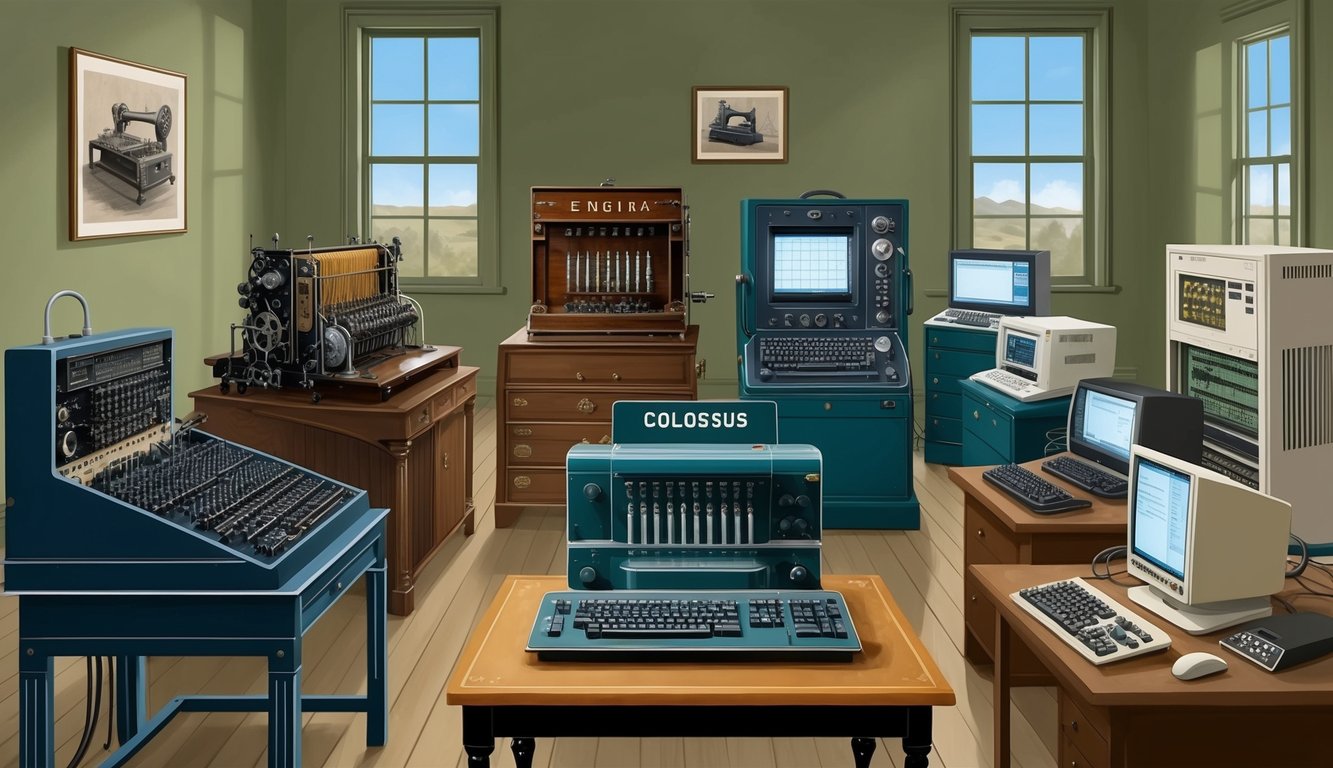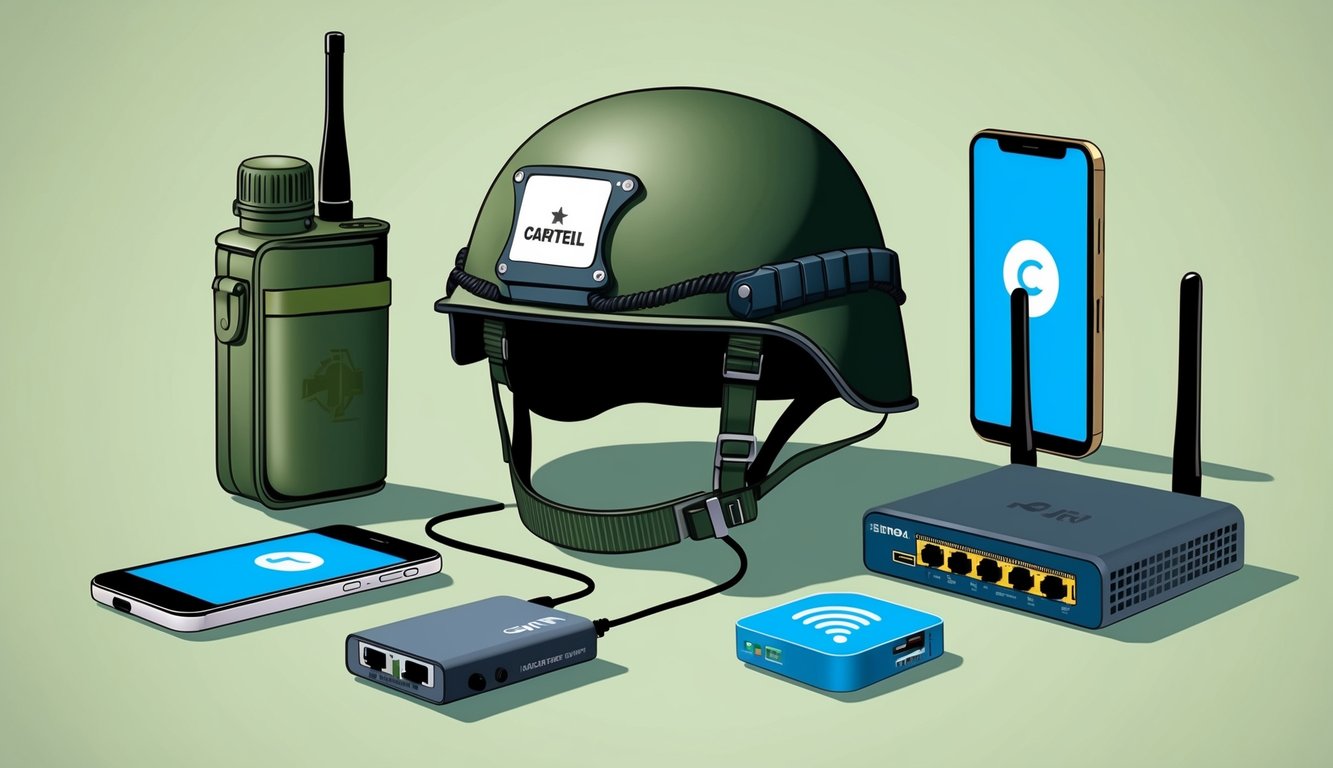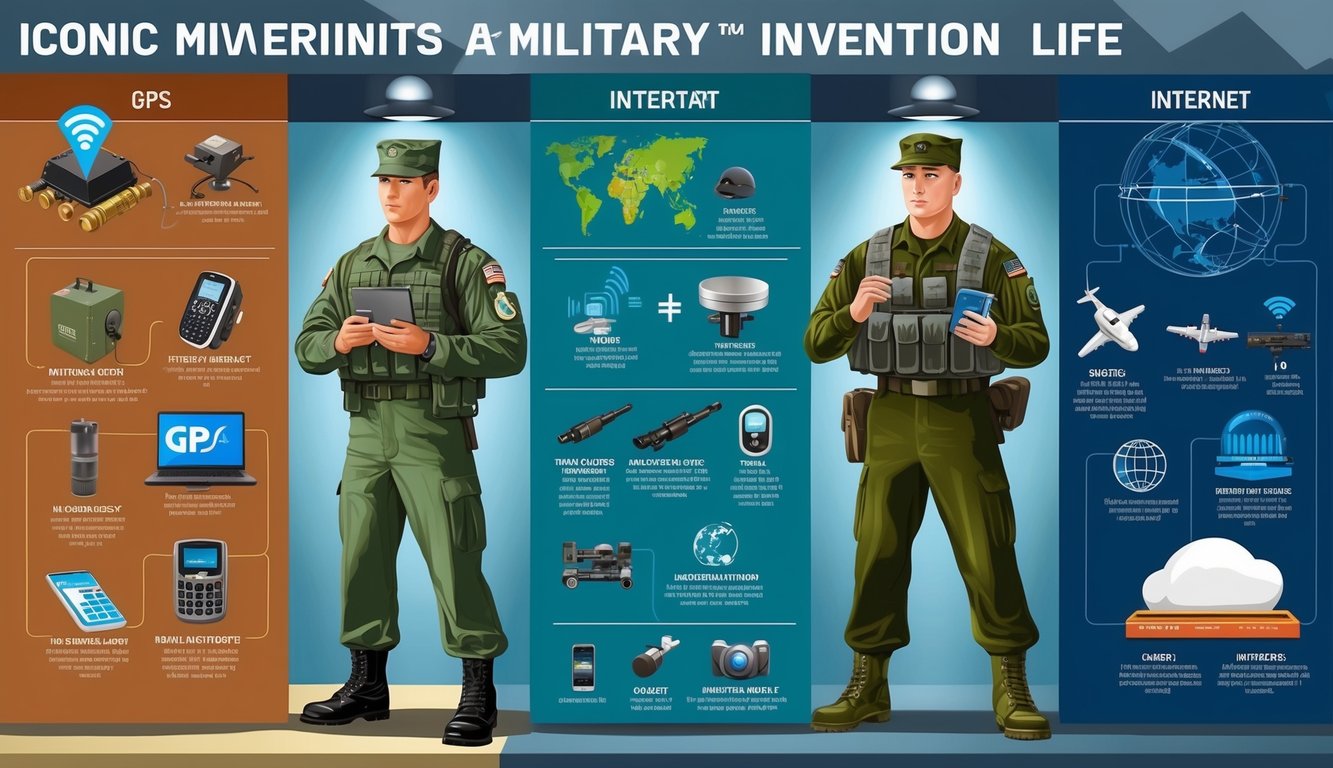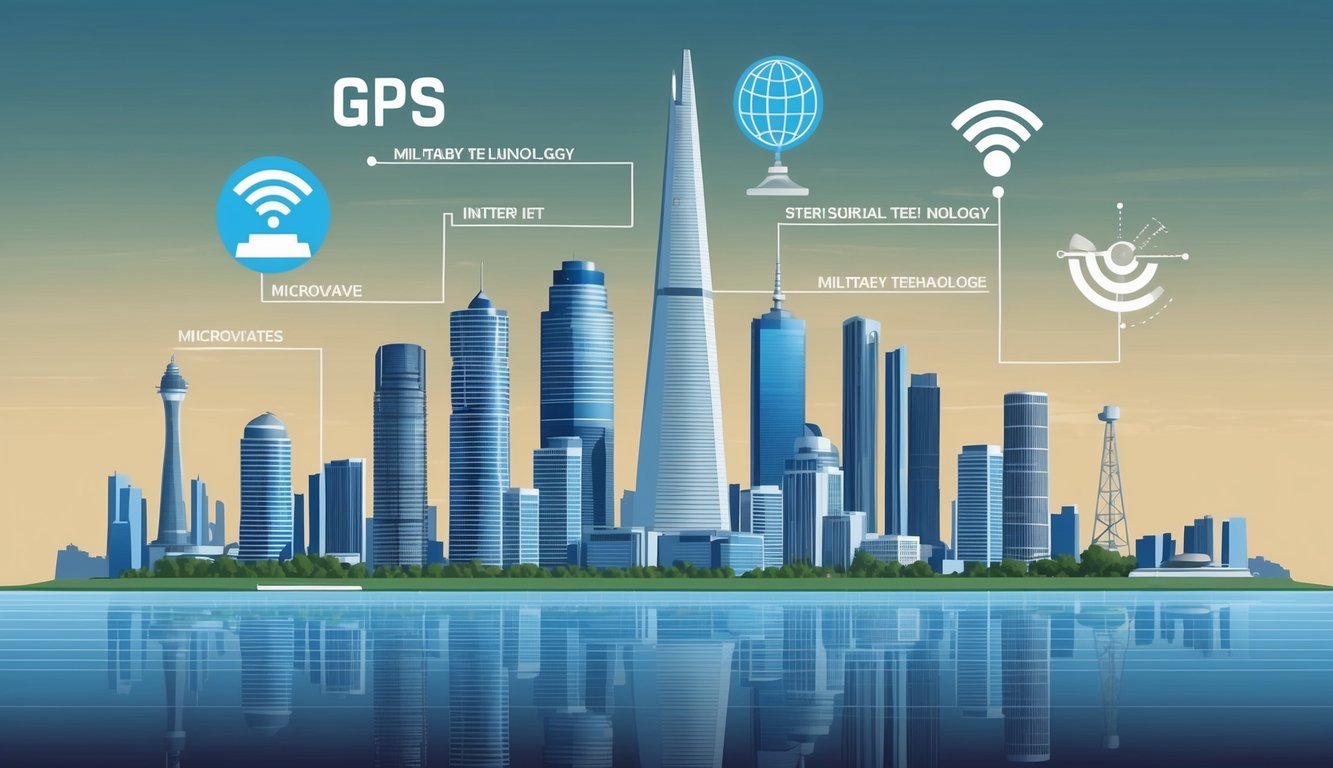**The Unseen Impact of Military Innovations on Daily Life**
Military advancements have subtly transformed our everyday lives, often without our awareness.
From the devices we carry to the meals we consume, numerous commonplace items have origins in military technology.
While these inventions were initially crafted for combat, they have evolved to serve valuable roles in civilian settings, reshaping our methods of communication, work, and navigation.
You may be surprised to discover that the GPS directing you home, the microwave warming up your meal, and even the internet enabling you to read this post all have their beginnings in military research and development.
These technologies, created initially for strategic advantages in warfare, have seamlessly entered our daily routines, enhancing convenience, efficiency, and interconnectedness.
As you navigate through your day, take a moment to reflect on the military origins of the objects and systems you depend on.
The influence of these innovations reaches far beyond their initial designs, leaving a lasting mark on modern society in various ways, from life-saving medical treatments to daily conveniences.
### Key Takeaways
– Military inventions have had a significant impact on everyday technologies and conveniences.
– Various common items, such as GPS and the internet, stem from military research initiatives.
– These innovations continuously shape contemporary society, enhancing efficiency and connectivity in daily activities.
## Military Innovations That Pioneered Modern Computing

Military developments have played a pivotal role in the evolution of the digital age we inhabit today.
From the inception of early computers to advanced global navigation systems, these innovations have transformed military operations and civilian life alike.
### From ENIAC to Personal Computers
The U.S. Army’s development of the Electronic Numerical Integrator and Computer (ENIAC) during World War II marked a significant milestone.
This colossal machine, weighing 30 tons, was capable of executing complex ballistic calculations in mere seconds, laying the groundwork for future computer architectures.
In the 1960s, military-funded research led to the introduction of integrated circuits, miniaturizing computing devices and enhancing their power.
By the 1970s, this technological advancement permeated personal computers, bringing computational capabilities into homes and offices.
Additionally, the military’s pursuit of portable computing prompted innovations that influenced the design of consumer laptops, which were initially ruggedized for battlefield use.
### The Birth of the Internet: ARPANET
You might find it surprising that the internet you access daily originated from a military initiative.
In 1969, the U.S. Department of Defense launched the Advanced Research Projects Agency Network (ARPANET).
Originally designed to connect research institutions and maintain communication during nuclear threats, ARPANET introduced packet-switching technology, effectively allowing data to be transmitted via multiple pathways.
This network laid the foundation for the Internet Protocol (IP) system, which powers today’s internet.
The subsequent development of the World Wide Web at CERN democratized internet access, enabling you to connect globally, gather information, and utilize countless online services.
### How GPS Revolutionized Navigation
The Global Positioning System (GPS) is another military innovation that has fundamentally altered navigation.
Developed by the U.S. Department of Defense in the 1970s, it was initially intended for military applications.
Using a constellation of satellites to accurately pinpoint locations on Earth, GPS became available for civilian use after President Reagan authorized its accessibility in 1983 following an incident involving a Korean Air Lines flight straying into Soviet airspace.
Today, GPS technology is embedded in smartphones, vehicles, and many other devices, facilitating navigation, fitness tracking, and even item recovery.
It has significantly impacted industries such as agriculture, shipping, and emergency services, improving operational accuracy and efficiency.
## Essential Communication Tools from the Battlefield to the Boardroom

Military communications technology has profoundly influenced civilian life, revolutionizing the means through which we connect, capture moments, and navigate our environment.
### Walkie-Talkies and Their Civilian Counterparts
You may have used a walkie-talkie for various purposes—work or leisure.
Originally developed for soldiers during World War II, these handheld radios rapidly transitioned into civilian use.
Today, walkie-talkies are commonly employed by security teams, event organizers, and families on vacations, providing instant communication without relying on cellular networks.
Construction sites and warehouses frequently utilize walkie-talkies, which have evolved to include features such as hands-free operation and extended range capabilities.
### Digital Cameras and Surveillance Evolution
Advancements in military imaging technology laid the groundwork for the digital cameras that we frequently utilize today.
Once employed for reconnaissance, this technology has become widespread in daily life.
You now carry high-quality cameras in your smartphones, enabling you to capture and instantly share moments.
Surveillance systems, originally designed with military needs in mind, now help safeguard homes and businesses, evident in the presence of security cameras across public spaces.
### The Far Reach of Radar Technology
Radar technology, initially developed for detecting enemy aircraft during World War II, has permeated several aspects of daily life.
For instance, weather forecasts depend heavily on radar, which allows meteorologists to track storms and predict weather patterns accurately.
Additionally, radar technology assists with cruise control and collision avoidance systems in vehicles, and it plays a critical role in air traffic control, ensuring the safety and punctuality of flights.
## Transportation Transformations: Military Vehicles in Daily Life
Military vehicles have unexpectedly transformed civilian transportation.
From durable off-road vehicles to cutting-edge underwater exploration craft, these advancements have redefined how we move and explore our surroundings.
### The Journey of Jeeps from War Machines to Adventure Vehicles
The renowned Jeep originated as a military vehicle during World War II, prized for its versatility and durability.
Following the war, it captured the public’s imagination, with the first civilian Jeep hitting the market in 1945.
Today, Jeep symbolizes adventure, capable of conquering rough terrains with ease—whether at the beach or traversing mountain trails.
Modern Jeep models retain many features from their military predecessors, including:
– High ground clearance
– Removable doors and roofs
– Robust suspension systems
These attributes make Jeeps popular for both everyday transportation and outdoor excursions.
### How Tanks Roll Over into Civil Engineering
The technological innovations of tanks have found surprising applications in civilian industries.
The tracks that allow tanks to navigate difficult landscapes have inspired the design of heavy machinery, such as bulldozers and excavators, commonly used in construction and agriculture.
These machines employ similar track systems to traverse muddy construction sites or uneven farmland, ensuring stability and weight distribution to prevent sinking into soft ground.
Other tank-inspired creations you might encounter include:
– Snowmobiles for winter activities
– All-terrain vehicles (ATVs) for outdoor enthusiasts
– Tracked vehicles for polar exploration
These innovations facilitate the navigation of challenging terrains, whether for work or leisure.
### Submarines and Civilian Underwater Exploration
Military submarine technology has ushered in new possibilities for ocean exploration.
Today, civilian submersibles enable scientists and thrill-seekers to probe deeper underwater.
You can even experience this technology through tourist submarines that offer guided dives around coral reefs and shipwrecks, revealing the mysteries of the ocean to casual explorers.
Submarine-derived innovations have also enhanced:
– Underwater cameras for marine research
– Diving equipment for recreational scuba
– Remotely operated vehicles (ROVs) for offshore industries
Such advancements provide opportunities for people to gain a better understanding of the underwater world, thanks to military ingenuity.
## Medical Advancements Courtesy of the Military
Military medical innovations have reshaped civilian healthcare significantly, with breakthroughs born from urgent battlefield needs now safeguarding lives in everyday contexts.
### Blood Banks: From Battlefield Necessity to Civilian Lifeline
During World War I, blood banks emerged as a crucial military innovation.
Army Captain Oswald Robertson pioneered the first blood depot in 1917, discovering that type O blood could be preserved for up to 28 days, revolutionizing casualty care.
This crucial innovation quickly transitioned into civilian hospitals, providing access to a network of blood banks across the nation.
Modern facilities utilize advanced preservation techniques developed from military practices, allowing for the collection, testing, and distribution of blood products essential for various medical conditions.
### Epipens and Auto-Injectors: Saving Civilian Lives
Auto-injectors, such as the widely-used EpiPen, have military origins.
Developed by the U.S. military to protect soldiers against chemical warfare, the first auto-injector delivered atropine to counteract nerve agents.
Recognizing its potential for civilian use, particularly for severe allergic reactions, engineers adapted this device.
Today, the EpiPen allows you to swiftly administer epinephrine during anaphylaxis, providing a portable and user-friendly solution for emergencies.
Auto-injectors have expanded to address conditions like diabetes and multiple sclerosis, demonstrating how military innovations continue to enhance civilian healthcare.
## Daily Conveniences with a Military Heritage
Many common items in your daily life trace back to military research and development.
These innovations have been intricately woven into civilian life, enhancing convenience and efficiency in remarkable ways.
### Duct Tape and Super Glue: Sticky Solutions for All
Duct tape, initially known as “duck tape,” was invented during World War II to keep moisture out of ammunition cases.
Its strong adhesive and waterproof qualities made it popular among soldiers for quick fixes.
After the war, it quickly became a household staple across America.
You might have used it to mend a leaky pipe or patch a damaged tent.
Super Glue, another military innovation, emerged accidentally during research on clear plastic gun sights.
Its extraordinary adhesive strength drew attention, leading to its widespread use—most likely you have a tube handy for repairs or creative projects.
Both of these adhesives highlight how military ingenuity translates into practical applications for civilian life.
### The Heat is On: Microwave Ovens in Every Kitchen
Your ability to quickly reheat meals is rooted in a wartime discovery.
Engineers working with radar technology during World War II realized that microwaves could effectively heat food.
This understanding led to the creation of the first microwave ovens—massive and costly devices ultimately refined for home use.
Today, virtually every kitchen features a microwave, revolutionizing meal preparation by saving time and energy.
### Freeze! The Origin of Frozen Juice Concentrate
The ease of mixing frozen juice concentrate with water for quick beverage preparation has military origins.
During World War II, the U.S. Army sought a way to transport vitamin C efficiently without taking up the space of whole citrus fruits.
Scientists devised a method to eliminate water from fruit juice, resulting in a compact, frozen product suitable for shipping and reconstitution.
This technology later transitioned to civilian use, allowing you to enjoy a variety of frozen juices, from orange to grape, as a result of this wartime innovation.
This simple yet effective strategy has notably altered how you consume and store fruit juices.
## Lifestyles of the Secure and Vigilant
Military innovations have significantly influenced civilian security and awareness.
Advanced technologies originally designed for wartime now serve vital roles in everyday protection and surveillance.
### Night Vision: Seeing Beyond the Dark
You may have witnessed night vision goggles in action movies, but did you realize they are now utilized by wildlife enthusiasts and security personnel? These devices amplify low light, allowing for clear visibility in near darkness.
Originally designed for military use, night vision technology is now accessible to civilians, with various products available including night vision scopes for hunting and infrared-equipped security cameras.
The latest models provide clear views even in low-light conditions, enhancing security and exploration experiences.
### The Protective Gaze of Spy Satellites
Ever wonder how weather apps provide accurate forecasts? They rely on spy satellites.
Initially launched for military reconnaissance, these satellites now serve a plethora of civilian applications.
You benefit from satellite observations daily, as they monitor weather patterns, enhance GPS accuracy, and assist farmers in tracking crop health.
Additionally, satellite imagery is instrumental in environmental protection initiatives, enabling the monitoring of illegal deforestation and marine pollution.
While privacy concerns persist, the advantages of spy satellites are undeniable, offering significant contributions to disaster response and urban development.
### Safeguarding Lives with Advanced Drone Technology
Drones have evolved beyond merely capturing aerial photography.
Search and rescue teams utilize drones to locate missing individuals in remote areas, while firefighters deploy them to assess dangerous fires from a safe distance.
These unmanned aerial vehicles, initially developed for military purposes, have become indispensable in civilian emergencies.
Soon, you may see drones delivering medical supplies to isolated locations or monitoring urban traffic dynamics.
Rapid advancements are being made in drone technology, with some models capable of detecting heat signatures, thereby playing essential roles in locating survivors in disaster scenarios and enhancing public safety during large events.
## Dressing the Part: Military Influences in Fashion and Gear
Military innovation has left a lasting imprint on civilian fashion and accessories.
From iconic eyewear to functional timepieces, these military-inspired items have become integral to modern wardrobes.
### From Aviator Sunglasses to Civilian Chic
Aviator sunglasses, now a favorite among celebrities and everyday people, were originally commissioned by the U.S. military in the 1930s to provide eye protection for pilots.
Designed to minimize glare at high altitudes while covering the full field of vision, aviators quickly became a staple in civilian life following World War II, symbolizing coolness and adventure.
Today, aviators come in various styles, representing a timeless accessory favored for their combination of functionality and aesthetic appeal.
### The Utilitarian Charm of Wristwatches
Your wristwatch might have been influenced heavily by military design.
The popularity of wristwatches surged during World War I, as soldiers needed a convenient way to tell the time without using their hands.
Prior to this, pocket watches were the standard.
The military’s demand for practicality and efficiency contributed to the widespread adoption of wristwatches, designed to be durable and readable in diverse conditions.
Many features in contemporary watches, such as luminous dials and water resistance, trace their origins back to military needs.
Today, various military-inspired watches combine functionality and style, ranging from rugged tactical models to elegant dress watches.
## Surprising Origins: Domestic Items with a Military Past

Many household items you interact with daily possess surprising military origins.
Originally developed for wartime purposes, these inventions have seamlessly transitioned into civilian life, transforming daily routines and offering solutions to common issues.
### Silly Putty and Other Unexpected Military Derivations
Do you remember the stretchy material known as Silly Putty? It originated from a failed World War II attempt to create synthetic rubber.
What remained was a unique substance with fascinating properties, including the ability to lift ink from newspapers.
Though it didn’t meet military purposes, it became a popular toy in the 1950s.
As for duct tape, it was conceived during WWII to seal ammunition cases, showcasing its military roots.
Here are a few other military-derived items:
– Microwaves (from radar technology)
– Super Glue (developed for clear plastic gun sights)
– GPS (originally for military navigation)
### The Bug Spray That Went to War and Back
DEET, the active ingredient in many insect repellents, was formulated by the U.S. Army in 1946 to protect soldiers from insect-borne illnesses in tropical settings.
After rigorous testing in the Philippines, DEET proved effective against mosquitoes and other pests.
Introduced to the public in 1957, DEET-based products are commonly utilized for outdoor activities.
The military has continued to refine insect repellents, resulting in newer formulations like picaridin, benefiting both soldiers and civilians.
### Sanitary Napkins: Absorbing More than Just Military History
During World War I, nurses discovered that cellulose bandages used for injuries were more absorbent than traditional cloth menstrual pads, leading to the creation of disposable sanitary napkins.
The paper company Kimberly-Clark, initially producing cellulose for gas mask filters, repurposed its material post-war to launch Kotex, the first commercial disposable pad in 1920.
This innovation significantly improved hygiene and comfort for women, allowing for more freedom of movement.
The technology has continued to evolve, with modern pads utilizing materials developed for military use.
## Frequently Asked Questions

Military innovations have had a deep impact on civilian life, culminating in an array of everyday technologies we have come to rely upon.
These advancements span multiple fields, continuously shaping our modern landscape in unexpected ways.
### Which everyday items do we use that were originally developed for military purposes?
You probably use several military-derived inventions every day, often without realizing their origins.
GPS on your smartphone comes from military satellite technology, while duct tape was created during World War II for sealing ammunition cases.
The microwave emerged from research related to radar technology.
### How has military technology shaped today’s world?
Military technology has transformed communication, transportation, and healthcare.
The internet, once a defense project, has revolutionized global connectivity.
Jet engines initially developed for military aircraft now power commercial travel.
Medical trauma care techniques originating in battlefield medicine are saving lives in civilian settings.
### What are some of the greatest military innovations that have impacted civilian life?
The computer stands out as an influential military innovation with a broad civilian impact.
The mass production of penicillin, motivated by wartime requirements, revolutionized modern medicine.
Digital photography, first developed for spy satellites, is now commonplace in smartphones and cameras.
### Can you list some World War II technologies that are now common in civilian use?
You frequently encounter numerous WWII-era innovations in daily life.
Aerosol sprays, originally developed for insecticides, are common in various products.
Superglue was serendipitously discovered through the development of plastic gun sights, while pressurized cabins first used in military aircraft are now standard in commercial aviation.
### What are the key military innovations that transformed warfare in the 20th century?
Nuclear technology fundamentally changed global dynamics, paving the way for civilian nuclear power.
Radar systems transformed air defenses and are now essential tools for weather forecasting.
Cryptographic advancements safeguard modern cybersecurity and secure online transactions.
### Which modern-day technologies originated from wartime research and development?
Many contemporary technologies with military roots are now integral to our everyday lives.
Drones, initially designed for reconnaissance, now assist in photography and deliveries.
Virtual reality, developed for military training, has found applications in entertainment and education.
Additionally, autonomous vehicles have emerged from defense research into unmanned systems.

